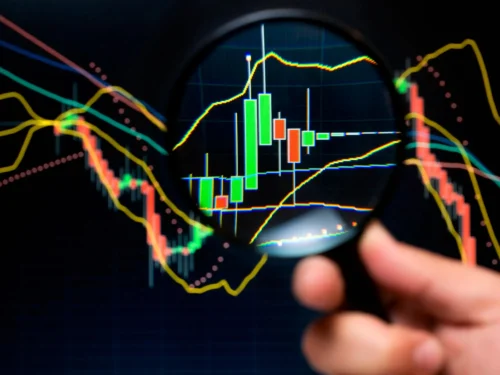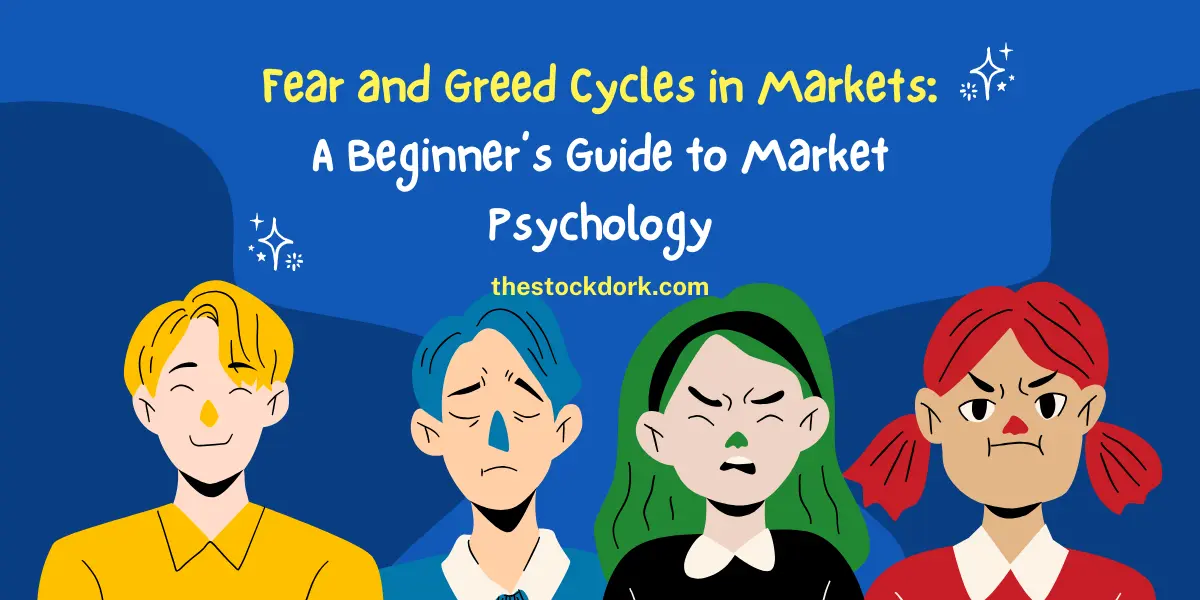When people talk about the market being driven by fear or greed, they are describing how emotion influences prices.
These two forces are at the heart of market behavior. Fear causes investors to sell when they feel uncertain, while greed pushes them to buy when they see others making money.
Understanding how these emotions shape decisions helps beginners stay calm and confident during market swings.
The balance between fear and greed affects everything from short-term price moves to long-term investing trends.
By learning how these cycles work, you can recognize when emotion is guiding the crowd and make more rational choices for yourself.
What Are Fear and Greed Cycles?
Fear and greed cycles are the emotional rhythm that repeats in financial markets over time. When investors feel hopeful, they buy more aggressively, and prices rise.
As optimism grows, this confidence can turn into greed, driving prices higher than a company’s real value.
Eventually, reality sets in. Prices stop rising, investors begin to worry, and fear replaces excitement. Selling increases, values fall, and the cycle resets.

Recognizing where the market sits in this emotional pattern can help you avoid following the crowd at the wrong moment.
Why Do Investors React Emotionally?
Markets are made up of people, and people are emotional by nature. In finance, this behavior is studied in a field called behavioral finance. It explores how feelings and instincts influence money decisions.
Most investors prefer avoiding losses over making gains, a tendency called loss aversion. That fear of losing often causes people to sell too quickly during downturns.
Another common behavior is herd mentality, which means following others even when the facts suggest otherwise. When investors see others making money, they often join in without considering risk.
During periods of optimism, this behavior leads to overbuying. When markets fall, the same instinct triggers panic selling. Together, these reactions form the repeating pattern known as fear and greed cycles.
How Fear and Greed Affect Market Prices
Stock prices rise and fall based on supply and demand, but emotion plays a major role in those shifts. When investors feel confident, demand for stocks increases, leading to higher prices.
This is the greed phase.
When uncertainty spreads, demand drops as people sell to avoid losses. That is the fear phase. Both emotions can push prices away from their fair value.
For example, during a strong economy, investors might overlook risks and drive prices far above what companies are truly worth.
Later, when negative news appears, fear spreads quickly and prices drop even below fair value.
The key for investors is to recognize that these emotional reactions are temporary. Markets eventually return to balance as confidence and fear even out.
Understanding the Fear and Greed Index
The Fear and Greed Index is a simple way to measure market emotion.
It combines several indicators such as stock momentum, volatility, and demand for safe assets to show whether investors are acting fearful or greedy.
When the index shows extreme fear, it often means prices have fallen too far, too fast. When it shows extreme greed, it can suggest that optimism has gone too far.
This index is not a perfect timing tool, but it offers insight into how emotions are influencing the market at any given time.

Lessons from History
History provides clear examples of how fear and greed move markets. During the late 1990s, the dot-com boom fueled intense excitement around technology stocks.
Greed drove investors to buy at any price, assuming profits would grow forever. When those expectations collapsed, fear returned, and prices crashed.
In 2008, a similar pattern unfolded during the housing bubble, followed by widespread panic when the system faltered. More recently, in early 2020, markets fell sharply as global uncertainty spread, only to rebound months later when optimism returned.
These examples show that emotion often swings to extremes before settling. Investors who stayed patient during fearful times and avoided overconfidence during booms often came out ahead in the long run.
How to Stay Calm During Market Cycles
Emotional investing happens when decisions are based on feelings instead of plans. To avoid this, it helps to have a clear investment strategy and a long-term perspective.
Checking your portfolio too often can increase anxiety, especially during downturns. Instead, focus on your goals and the quality of your investments.
Diversifying across different sectors and asset types can also reduce emotional stress. When one area falls, another may rise, helping balance results. Investing small amounts regularly rather than all at once can smooth out market ups and downs. These habits build consistency and reduce the urge to act on emotion.
Balancing Greed and Fear
Both fear and greed have roles in investing. Greed motivates people to take risks that can lead to growth, while fear helps them avoid unnecessary losses.
The challenge is finding balance. Too much greed can lead to bubbles and overconfidence, while too much fear can cause missed opportunities.
By paying attention to how you feel during market swings, you can make more thoughtful decisions. When you sense yourself getting swept up in excitement or panic, pause and review your goals.
Understanding where emotion fits in your decisions is a sign of growing financial maturity.
Frequently Asked Questions
What triggers fear and greed in markets?
Economic changes, interest rate shifts, or major global events often trigger emotional reactions among investors. Positive news can spark greed, while uncertainty fuels fear.
How can I tell when the market is fearful or greedy?
Indicators like the Fear and Greed Index and overall news tone can help. Rising volatility and heavy selling signal fear, while rapid price gains and optimism point to greed.
How can I avoid emotional investing?
Stay focused on your long-term goals, use a plan, and avoid making decisions based on short-term news. Understanding your risk tolerance helps you remain calm when markets move.
Does emotion always harm investors?
Not always. Emotion can encourage healthy caution or motivation. The goal is to recognize emotional extremes and keep them from controlling your decisions.
Conclusion
Fear and greed will always influence financial markets, because they reflect basic human behavior. The more you understand these emotions, the better you can manage them.
By learning how market sentiment changes and practicing patience, you can stay focused when others react impulsively.
Markets rise and fall, but disciplined investors who stay balanced through both fear and greed tend to do best over time.
Recognizing emotion without letting it dictate your moves is one of the most valuable skills any investor can develop.


 Tags:
Tags:










